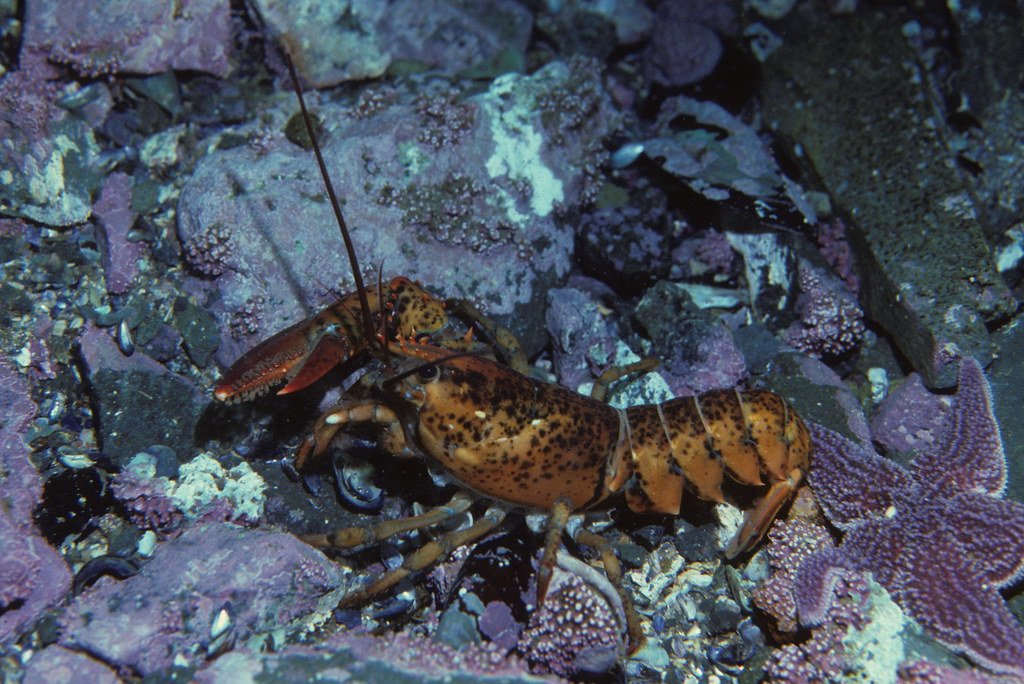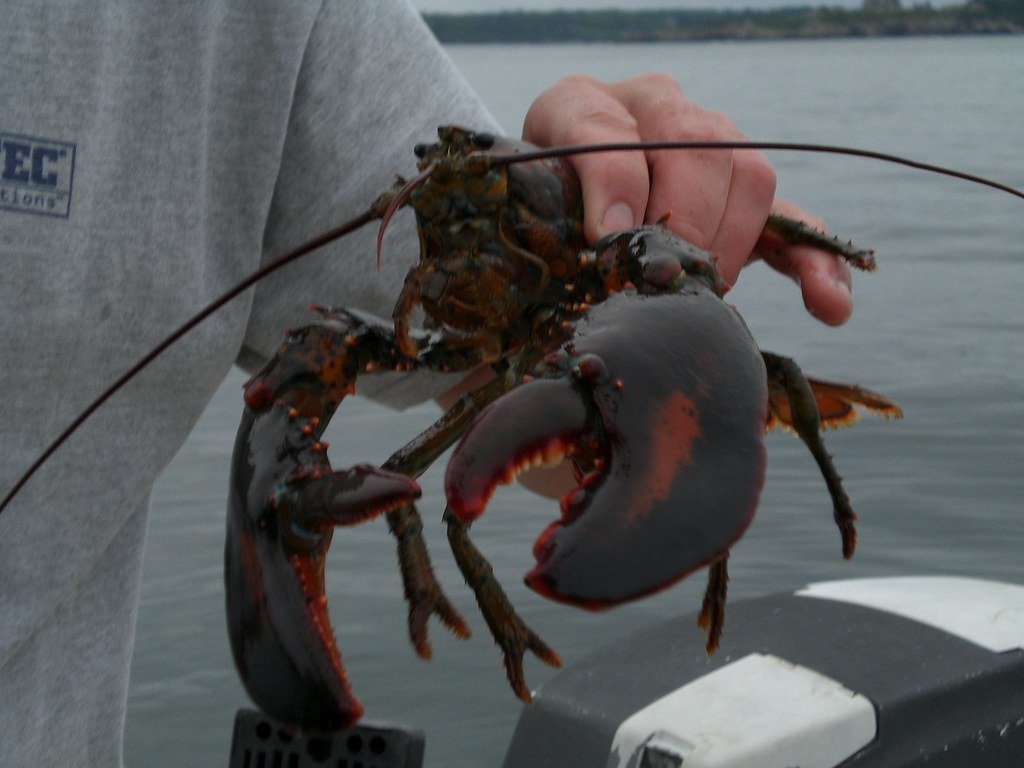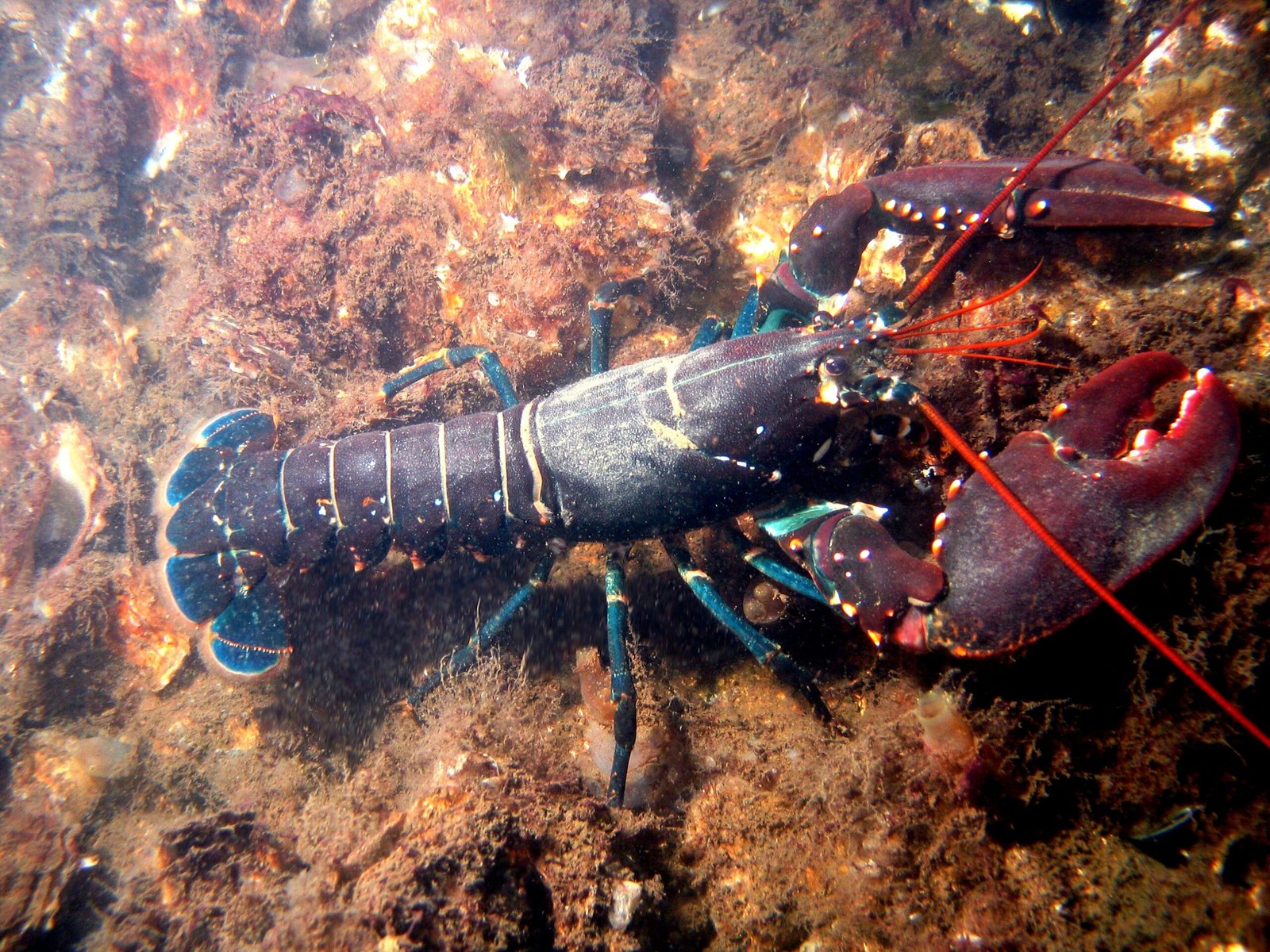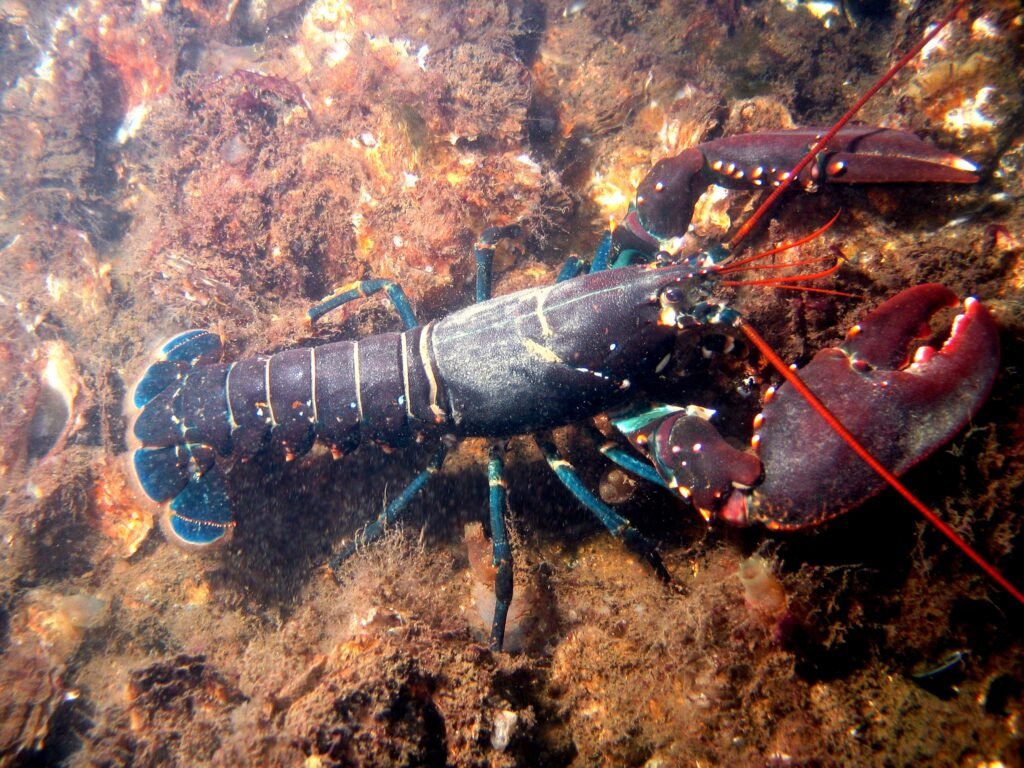In the frigid depths of the North Atlantic, where sunlight barely penetrates and temperatures hover just above freezing, lives one of nature’s most remarkable survivors. The American lobster moves through this underwater world like an armored tank, its claws ready to defend territory or capture prey. What most people see as a delicious seafood delicacy is actually a complex biological machine that has conquered some of the ocean’s most challenging environments.
The Evolutionary Journey of a Bottom Dweller

American lobsters didn’t just appear in our oceans yesterday – they’ve been perfecting their survival strategy for over 400 million years. These ancient arthropods have witnessed the rise and fall of dinosaurs, survived multiple mass extinctions, and adapted to changing ocean conditions that would have wiped out less resilient species.
Their evolutionary path took them from simple sea creatures to the sophisticated predators we know today. The lobster’s body plan has remained remarkably consistent through geological time, proving that sometimes evolution gets things right the first time. Think of them as the ocean’s version of a classic car design that never goes out of style.
Anatomy of an Underwater Warrior

The American lobster’s body reads like a blueprint for aquatic domination. Their segmented exoskeleton provides both protection and flexibility, allowing them to navigate tight crevices while maintaining defensive capabilities. Each segment serves a specific purpose, from the powerful tail that propels them backward to escape danger to the intricate mouthparts that process food.
Their famous claws aren’t just for show – they’re specialized tools with distinct functions. The larger “crusher” claw can generate up to 100 pounds of pressure per square inch, enough to crack open shellfish and intimidate rivals. The smaller “cutter” claw works like precision scissors, allowing them to tear apart softer prey with surgical accuracy.
The Secret Life of Lobster Claws

Most people assume all lobsters are right-handed or left-handed, but the truth is far more fascinating. Young lobsters actually start life with two identical claws, and their handedness develops based on which claw they use more frequently during their early months. It’s like watching a toddler discover whether they’re left-handed or right-handed, except with potentially deadly consequences.
The specialization of claws continues throughout their lives, with the crusher claw growing larger and more powerful while the cutter claw remains smaller and more agile. This adaptation allows them to exploit different food sources and hunting strategies, making them incredibly versatile predators in their ecosystem.
Masters of the Molting Process

Perhaps no process in the animal kingdom is more dramatic than a lobster’s molt. Picture trying to crawl out of a suit of armor while remaining completely vulnerable to every predator in the neighborhood – that’s essentially what lobsters do multiple times throughout their lives. This incredible process can take several hours and represents one of nature’s most remarkable transformations.
During molting, lobsters must shed their entire exoskeleton, including the lining of their stomach and the covering of their eyes. They become completely soft and defenseless, hiding in crevices or burrows until their new shell hardens. Young lobsters molt up to 25 times in their first five years, while adults might only molt once every few years.
The timing of molting is crucial for survival and reproduction. Female lobsters must molt to mate, as their rigid shell would otherwise make reproduction impossible. This creates a narrow window of opportunity that has shaped their entire reproductive strategy.
Cold Water Champions

American lobsters thrive in waters that would send most creatures into shock. They prefer temperatures between 32 and 68 degrees Fahrenheit, with many populations living in near-freezing conditions year-round. Their bodies have adapted remarkable strategies to function in these harsh environments, including specialized proteins that prevent their blood from freezing.
Cold water actually benefits lobsters in several ways. The lower temperatures slow their metabolism, allowing them to survive longer periods without food. It also increases the dissolved oxygen content in the water, supporting their respiratory needs. These conditions have made them the undisputed rulers of the North Atlantic’s coastal waters.
The relationship between water temperature and lobster behavior is so precise that scientists can predict population movements based on ocean temperature changes. When waters warm even slightly, lobsters migrate to deeper, cooler areas, sometimes traveling dozens of miles to find suitable conditions.
The Surprising Intelligence of Crustaceans

Recent research has shattered the myth that lobsters are simple, instinct-driven creatures. These remarkable animals demonstrate problem-solving abilities, memory retention, and even social learning that rivals many vertebrates. Laboratory studies have shown lobsters can navigate complex mazes, recognize individual humans, and remember the locations of shelter and food sources for weeks.
Their intelligence extends to social interactions as well. Lobsters establish dominance hierarchies through ritualized combat, with winners and losers remembering their status for extended periods. They can recognize familiar individuals and adjust their behavior accordingly, suggesting a level of social cognition that scientists are only beginning to understand.
Perhaps most remarkably, lobsters appear to experience something analogous to anxiety and stress. When given anti-anxiety medications, they show reduced defensive behaviors and increased exploration – responses that mirror those seen in humans and other mammals.
Feeding Strategies of Opportunistic Predators

American lobsters are nature’s ultimate opportunists, adapting their diet to whatever the ocean provides. While they’re often portrayed as bottom-feeding scavengers, the reality is far more complex. They actively hunt fish, crabs, sea urchins, and even other lobsters when the opportunity arises.
Their feeding behavior changes dramatically with age and size. Young lobsters hide in rocky crevices and feed primarily on small crustaceans and marine worms. As they grow larger, they become more aggressive predators, capable of taking down fish and even small octopuses. The largest individuals can live for over a century and reach weights exceeding 40 pounds.
Lobsters also play a crucial role as marine recyclers, consuming dead and decaying matter that would otherwise accumulate on the ocean floor. This scavenging behavior helps maintain the health of their ecosystem while providing them with essential nutrients.
The Great Lobster Migration Mystery

Every fall, something extraordinary happens along the North American coast. Millions of American lobsters begin a synchronized migration that can span hundreds of miles, moving from shallow coastal waters to the deeper continental shelf. This massive movement involves lobsters walking single-file across the ocean floor in formations that can stretch for miles.
Scientists believe this migration is triggered by dropping water temperatures and the need to find suitable breeding grounds. The journey is fraught with danger, as migrating lobsters become easy targets for predators and face the challenge of navigating unfamiliar territory. Yet somehow, they manage to find their way using a combination of chemical cues, magnetic fields, and celestial navigation.
The scale of this migration is staggering. Researchers have documented chains of lobsters containing tens of thousands of individuals, all moving in the same direction with remarkable precision. It’s like watching an underwater army on the march, following ancient routes that have been used for countless generations.
Reproductive Rituals and Mating Dances

The romantic life of American lobsters is far from simple. Males must court females through elaborate displays that can last for days, involving everything from chemical signals to physical demonstrations of strength. The female’s molting cycle determines the timing of these courtship rituals, creating periods of intense competition among males.
When a female is ready to mate, she releases pheromones that can attract males from considerable distances. The successful suitor must then guard his mate for up to two weeks, protecting her during her vulnerable post-molt period. This extended courtship and protection behavior demonstrates a level of investment rarely seen in marine invertebrates.
After mating, females carry their eggs for 10 to 11 months before releasing them as tiny larvae into the water column. A single female can produce 8,000 to 100,000 eggs, though only a tiny fraction will survive to adulthood. The odds are stacked against young lobsters, but those that do survive inherit the genetic blueprint for success in one of the ocean’s most challenging environments.
The Role of Lobsters in Marine Ecosystems

American lobsters serve as both predator and prey in complex marine food webs. They help control populations of sea urchins, preventing these spiny creatures from overgrazing kelp forests and other marine vegetation. Without lobsters, many coastal ecosystems would face dramatic changes that could cascade through entire food chains.
Large lobsters also serve as important prey for marine mammals, large fish, and even seabirds. Their abundance and predictable behavior make them a reliable food source for many species, particularly during migration periods when they’re most vulnerable. This dual role as predator and prey makes them a keystone species in many marine environments.
The burrows and shelters created by lobsters provide homes for numerous other marine species. Fish, crabs, and various invertebrates take advantage of these structures, creating small communities centered around lobster activity. These associations can last for years, with some species becoming entirely dependent on lobster-created habitats.
Sensory Superpowers of the Deep

American lobsters possess sensory abilities that would make science fiction writers jealous. Their antennae can detect chemical signals from miles away, allowing them to locate food, mates, and potential threats with remarkable precision. These chemical receptors are so sensitive they can distinguish between different types of prey and even identify individual lobsters.
Their eyes, while relatively simple compared to human vision, are perfectly adapted for their environment. Lobsters can see ultraviolet light and detect polarized light patterns, giving them navigation abilities that humans can only dream of. They use these visual cues to orient themselves during long migrations and to recognize familiar territories.
Perhaps most remarkably, lobsters can detect minute changes in water pressure and movement through specialized sensors along their bodies. This allows them to sense approaching predators or prey even in complete darkness, making them formidable hunters in the depths of the ocean.
The Lobster Fishing Industry and Human Impact

The relationship between humans and American lobsters spans centuries, with Native American tribes harvesting these creatures long before European colonization. Today, the lobster fishing industry represents one of the most valuable fisheries in North America, supporting thousands of jobs and generating billions in economic activity.
Modern lobster fishing relies on baited traps that allow undersized lobsters to escape while capturing legal-sized individuals. This sustainable approach has helped maintain healthy lobster populations despite intense fishing pressure. However, climate change and ocean acidification pose new challenges that could dramatically alter lobster populations in the coming decades.
The industry has also developed sophisticated systems for tracking lobster movements and abundance, using everything from underwater cameras to genetic analysis. These tools help fishermen and scientists work together to ensure that lobster populations remain stable for future generations.
Climate Change and the Future of Lobster Populations

Rising ocean temperatures pose the greatest threat to American lobster populations since the last ice age. As waters warm, lobsters are forced to migrate to deeper, cooler areas, disrupting established populations and fishing grounds. Some southern populations have already begun declining as their preferred temperature ranges shift northward.
Ocean acidification presents another challenge, as lower pH levels can interfere with shell formation and make it harder for lobsters to build and maintain their protective exoskeletons. Young lobsters are particularly vulnerable, as they molt frequently and need to quickly develop new shells.
However, lobsters have shown remarkable adaptability throughout their evolutionary history. Some populations are already adjusting their behavior and physiology to cope with changing conditions. The question is whether these adaptations will occur quickly enough to keep pace with rapidly changing ocean conditions.
The Lobster’s Surprising Longevity

American lobsters challenge our understanding of aging in the animal kingdom. Unlike most creatures, lobsters don’t seem to experience traditional aging – they continue growing throughout their lives and maintain their reproductive capacity well into old age. Some individuals may live for over a century, reaching massive sizes that inspire both awe and respect.
This remarkable longevity is linked to their unique cellular biology. Lobsters produce an enzyme called telomerase that helps maintain the integrity of their DNA during cell division. While this doesn’t make them immortal, it does allow them to avoid many of the cellular damage effects that limit the lifespan of other animals.
The largest lobsters on record weighed over 40 pounds and were estimated to be 100 years old or more. These ancient giants represent living links to ocean conditions of the past, carrying genetic information that spans multiple human generations.
Conservation Efforts and Sustainable Harvesting

The American lobster industry has become a model for sustainable fisheries management. Strict regulations govern the size and reproductive status of lobsters that can be harvested, ensuring that breeding populations remain healthy. Fishermen must release females carrying eggs and lobsters that are either too small or too large to harvest.
Trap limits and seasonal closures help prevent overfishing while allowing fishermen to maintain profitable operations. Many areas also use escape vents in traps that allow juvenile lobsters to escape while retaining legal-sized individuals. These measures have helped maintain stable or increasing lobster populations in many regions.
Research and monitoring programs track lobster populations and their health, providing early warning systems for potential problems. Scientists work closely with fishermen to collect data and develop new conservation strategies, creating a partnership that benefits both the industry and the species.
Lobster Behavior and Social Structure

The social lives of American lobsters are far more complex than most people realize. These creatures establish territories, form dominance hierarchies, and engage in sophisticated communication using chemical signals, visual displays, and physical interactions. Dominant lobsters claim the best shelters and feeding areas, while subordinate individuals must make do with less desirable locations.
Lobster society is particularly dynamic during molting season, when established hierarchies can be completely overturned. A newly molted lobster becomes temporarily vulnerable, potentially losing its dominant position to a smaller but harder-shelled rival. These social dynamics create constant tension and competition within lobster communities.
Recent studies have revealed that lobsters can recognize individual neighbors and remember social interactions for extended periods. They adjust their behavior based on past encounters, showing aggression toward previous rivals while avoiding confrontation with superior opponents. This social memory allows them to minimize dangerous conflicts while maximizing their access to resources.
The Biochemistry of Lobster Survival

The biochemical adaptations that allow American lobsters to thrive in cold water are nothing short of remarkable. Their blood contains specialized proteins that prevent ice crystal formation, allowing them to remain active in near-freezing temperatures. These antifreeze proteins work by binding to ice crystals and preventing them from growing large enough to damage cells.
Lobsters also produce unique enzymes that function optimally at low temperatures, ensuring that their metabolism continues even when other animals would become sluggish or inactive. Their cellular membranes contain special lipids that remain flexible in cold water, preventing the rigidity that would otherwise impair cellular function.
Perhaps most impressive is their ability to regulate their internal pH levels despite changes in ocean chemistry. As ocean acidification increases, lobsters must work harder to maintain the proper chemical balance in their bodies, but they’ve shown remarkable resilience in laboratory studies testing their limits.
Predators, Prey, and the Lobster’s Place in the Food Web

American lobsters face different challenges at each stage of their lives. Larval lobsters drift in the plankton for weeks, serving as food for fish, jellyfish, and other planktonic predators. Only about one in 1,000 larvae survives to settle on the bottom and begin its bottom-dwelling life.
Juvenile lobsters face threats from fish, crabs, and even other lobsters. They must find secure hiding places and develop their defensive abilities quickly to survive their first few years. As they grow larger, the number of potential predators decreases, but they still face threats from large fish, seals, and occasionally even octopuses.
Adult lobsters become apex predators in their own right, capable of taking down fish, crabs, and other bottom-dwelling creatures. Their powerful claws and armored bodies make them formidable hunters, while their scavenging behavior helps them take advantage of any available food source. This versatility has made them one of the most successful marine arthropods.
The Future of Lobster Research

Scientists continue to unlock the secrets of American lobster biology, with new discoveries emerging regularly. Advanced genetic techniques are revealing the evolutionary relationships between different lobster populations and helping identify the genes responsible for their remarkable adaptations. This research could lead to insights applicable to other marine species facing similar environmental challenges.
Emerging technologies like acoustic tracking and satellite telemetry are providing unprecedented insights into lobster movements and behavior. Researchers can now follow individual lobsters for months or even years, revealing migration patterns and habitat preferences that were previously unknown. These studies are revolutionizing our understanding of lobster ecology and informing conservation efforts.
The study of lobster longevity and cellular biology has attracted attention from researchers interested in aging and cancer. The mechanisms that allow lobsters to maintain their health and reproductive capacity throughout their extended lives could provide valuable insights for human medicine and our understanding of the aging process.
The American lobster represents far more than a prized seafood delicacy. These remarkable creatures embody millions of years of evolutionary refinement, combining sophisticated behaviors, impressive physical adaptations, and surprising intelligence into a package that has conquered some of the ocean’s most challenging environments. From their complex social structures to their biochemical mastery of cold-water survival, lobsters continue to surprise and inspire researchers around the world.
As we face an uncertain future marked by climate change and ocean acidification, the American lobster’s story becomes increasingly relevant. Their ability to adapt and survive through countless environmental changes over geological time offers hope, while their current vulnerabilities remind us of the delicate balance that sustains marine ecosystems. The next time you encounter a lobster, whether in a restaurant or an aquarium, remember that you’re looking at one of nature’s most successful survivors – a living testament to the power of adaptation and the surprising complexity of life beneath the waves.
What secrets do you think these ancient mariners might still be hiding in the depths of our oceans?




